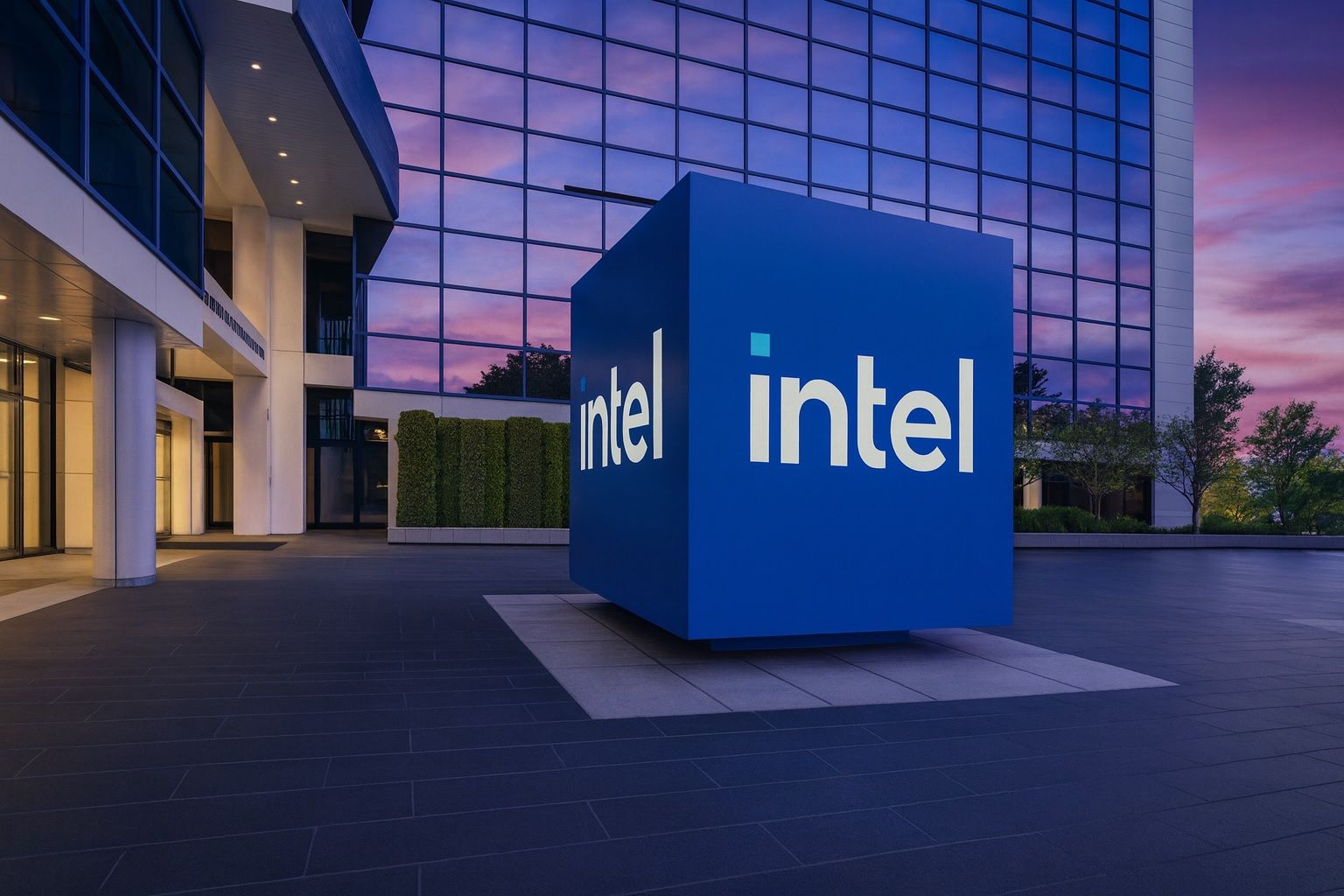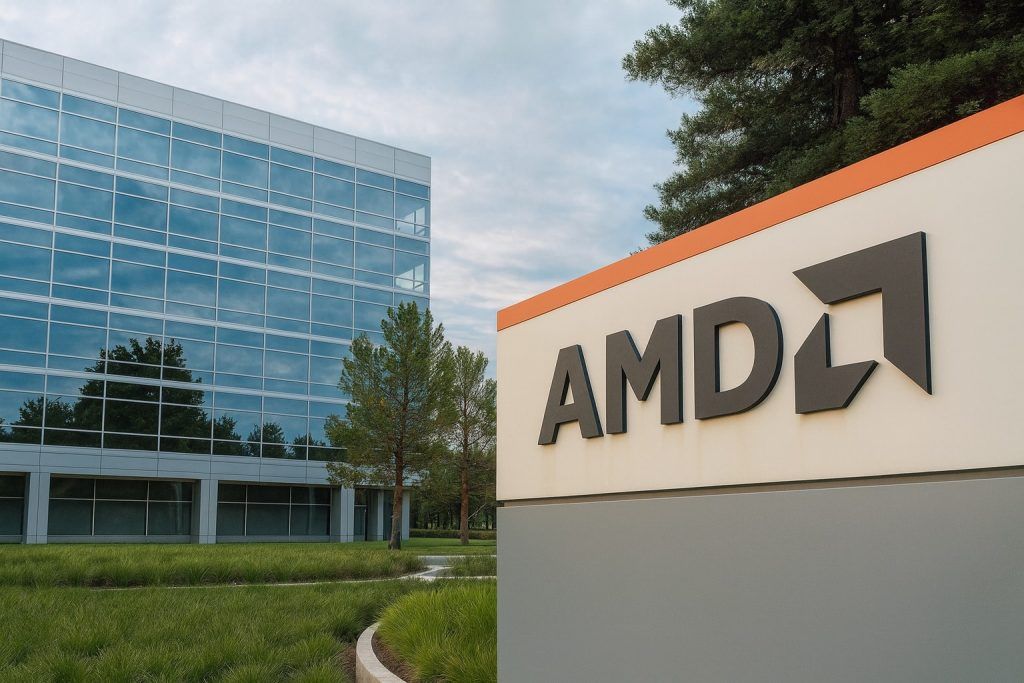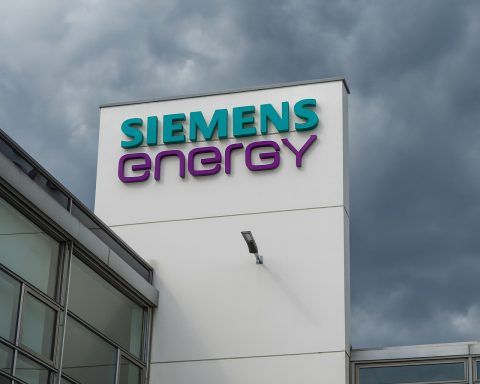Intel stock (NASDAQ: INTC) heads into the weekend trading around its latest close of $34.50, after gaining about 2.6% on Friday, November 21, in a volatile week dominated by new institutional ownership disclosures, fresh scrutiny of its foundry strategy and a geopolitical twist involving rival TSMC. [1]
While U.S. markets are closed today (Saturday, November 22), investors following Intel stock news are digesting a dense mix of headlines that could influence sentiment when trading resumes on Monday.
Intel Stock Price and Market Snapshot
- Last close (Nov 21, 2025): $34.50, up about 2.6% on the day, with an intraday range roughly between $32.9 and $35.0. [2]
- Recent trend: The stock has swung sharply this month, but remains well above its 52‑week low near $17.70, and below its recent high around $42.50. [3]
- Market capitalization: Estimates cluster around $160–165 billion as of this weekend. [4]
Different analysts and outlets peg Intel’s year‑to‑date gain anywhere from the mid‑50% range to roughly a doubling of the share price at peaks in early November, underlining how dramatic the 2025 recovery has been compared with the disaster year of 2024. [5]
Today’s Fresh Intel Stock News (November 22, 2025)
1. Institutions Shuffle Their Intel Bets
A series of new 13F-related headlines hit the tape today, showing a mix of buying and selling among major institutions:
- Prudential PLC cut its stake in Intel by about 44% in Q2, selling roughly 160,000 shares and ending the period with just over 204,000 shares, worth around $4.6 million at the time of filing. [6]
- MUFG Securities Americas increased its position by about 26%, buying just over 20,000 shares to lift its holding to roughly 96,700 shares valued around $2.2 million. [7]
- Journey Strategic Wealth LLC ramped up exposure aggressively, more than tripling its stake (up about 208%) to just over 37,000 shares in Q2. [8]
- Rhumbline Advisers purchased over 68,000 shares, contributing to a broader pattern of incremental accumulation by large asset managers. [9]
- Evelyn Partners Investment Management LLP also disclosed a position in Intel, and MarketBeat’s roll‑up of these filings notes that around 65% of Intel’s float is now held by institutions and hedge funds. [10]
For Intel stock, this set of filings sends a mixed but generally constructive message: some long‑term investors are locking in profits after a big run, while others are using volatility and the government/Nvidia/SoftBank stake story to build positions.
2. Intel CEO Responds to TSMC Trade‑Secret Allegations
The most eye‑catching headline dated today involves geopolitics and talent poaching rather than near‑term earnings.
Taipei Times reports that Intel CEO Lip‑Bu Tan publicly dismissed reports that a prominent 75‑year‑old former TSMC executive, Lo Wen‑jen (also spelled Lo Wei‑Jen in some coverage), brought trade secrets with him to Intel.Tan told reporters the chatter was “rumor and speculation” and stressed that Intel “respects intellectual property” of other companies. [11]
Key points from that report:
- Taiwanese media have focused all week on Lo’s move from TSMC retirement to an Intel role, alleging he may have taken proprietary know‑how just before leaving. [12]
- Local prosecutors in Taiwan have opened an inquiry, and TSMC has started its own internal investigation into whether confidential information was removed. [13]
- Lo previously held senior roles at both Intel and TSMC, including responsibility for advanced manufacturing R&D and ramping cutting‑edge AI chips, which makes the move highly sensitive. [14]
Separate tech‑industry coverage notes that Intel is leaning heavily on Lo’s experience to win advanced packaging orders tied to TSMC’s Arizona fab, aiming to package chips in the U.S. for customers such as Microsoft, Tesla, Qualcomm and possibly Nvidia. [15]
For investors, this story matters less for any immediate legal risk (nothing formal has been proven) and more because it highlights:
- How aggressively Intel is recruiting high‑end foundry talent.
- How tense the relationship is with TSMC just as both companies fight for AI and advanced packaging business.
3. Wall Street’s View: Semiconductors Still Have “Room to Run”
A Raymond James note published today on the broader semiconductor sector argues that leading chip names—including Nvidia, AMD, Intel and others—still have upside as AI demand structurally raises earnings power for the group. [16]
Raymond James is more vocal about Nvidia and Marvell as top AI plays, but the inclusion of Intel in the list of beneficiaries underscores a subtle shift: after two years of being treated as the laggard in nearly every AI conversation, Intel is increasingly being mentioned as part of the story rather than an afterthought.
At the same time, MarketBeat’s aggregated analyst data shows Intel still carries a consensus rating of “Reduce”, with only 2 Buy ratings versus 24 Hold and 8 Sell, and an average price target around $34.84—basically where the stock trades today. [17]
That split—sector bullishness but Intel‑specific caution—is central to today’s INTC narrative.
Foundry and Packaging: Citi Skepticism vs. New Momentum
Citi’s Harsh Take on Intel Foundry Services
A detailed note from Citi earlier this week continues to hang over Intel’s foundry ambitions and is very much part of what traders are weighing today. According to a MarketMinute summary:
- Citi acknowledges that major chipmakers like Qualcomm, Apple and Broadcom are evaluating Intel Foundry (IFS)—but mainly for advanced packaging (EMIB, Foveros), not for full wafer fabrication on leading‑edge nodes.
- The report argues that packaging deals alone are unlikely to generate the kind of high‑margin, high‑volume revenue Intel needs, warning that packaging is structurally lower margin than true foundry work. [18]
- Citi reiterates a Sell rating on Intel, emphasizing its view that Intel is still “far behind TSMC” technologically and pointing to sizable ongoing losses in the foundry segment. [19]
The same piece notes that Intel’s foundry business remained deeply in the red in 2024 and 2025, with multi‑billion‑dollar operating losses and no major external 18A customer yet announced. [20]
But Packaging Interest and 18A Progress Are Real
Balanced against Citi’s skepticism, there is growing third‑party evidence that Intel’s advanced packaging and next‑gen nodes are gaining traction:
- TrendForce reports rising industry interest in Intel’s EMIB and Foveros packaging, pointing to job postings at Apple and Qualcomm that specifically seek engineers with EMIB experience. The report frames this as a response to capacity bottlenecks at TSMC’s CoWoS lines, which are heavily booked by Nvidia and AMD. [21]
- Overclock3D, citing DigiTimes, says Intel hired ex‑TSMC “superhero” Lo Wei‑Jen partly to win packaging orders from U.S. customers using TSMC’s Arizona fab, letting those customers manufacture wafers at TSMC but package them at Intel inside the U.S. [22]
- In a separate article, Overclock3D reports that Intel executives describe steady 18A yield improvements averaging about 7% per month over the last 7–8 months, with mass production of 18A‑based Panther Lake CPUs planned for early 2026 and 14A node development said to be tracking ahead of where 18A was at a similar stage. [23]
- A German‑language analysis notes the same 7% monthly yield improvement figure and highlights Intel’s hiring of former Adobe executive Cindy Stoddard as CIO from December 1, 2025, emphasizing the need to modernize Intel’s internal IT and data infrastructure to support the foundry pivot. [24]
In short: Citi questions whether packaging and early 18A progress can translate into profits, but independent industry and tech reports confirm that:
- Yield metrics are finally moving in the right direction.
- Top‑tier customers are at least exploring Intel’s packaging technologies.
- Intel is adding heavyweight leadership in both technology and IT.
That tension—real operational improvement versus doubts about economic payoff—is a big part of why Intel’s stock is stuck near consensus targets despite huge year‑to‑date gains.
The Bigger Picture: Q3 Earnings, Government Stake and AI Push
Q3 2025: Back to Profitability
Intel’s Q3 2025 earnings report, released in late October, marked a clear break from the trauma of 2024:
- Revenue of about $13.7 billion, up roughly 3% year over year. [25]
- Net income around $4.1 billion, or $0.90 GAAP EPS, as gross margin rebounded into the high‑30s/low‑40s range thanks to cost cuts and a richer product mix in data center and AI chips. [26]
- Guidance for Q4 2025 calling for $12.8–13.8 billion in revenue and non‑GAAP EPS near $0.08, implying modest profitability despite ongoing foundry losses. [27]
Commentary from Intel and outside analysts frames Q3 as evidence that aggressive restructuring and headcount reductions are working, with operating expenses down and higher‑margin segments (data center, AI, advanced processes) starting to carry more weight. [28]
Massive Strategic Stakes: U.S. Government, Nvidia and SoftBank
Intel’s turnaround is also being financed and politically underwritten in a way that’s unusual even for a megacap:
- In August, the U.S. government agreed to take roughly a 9.9–10% equity stake in Intel, converting about $10 billion of grants and program funding into shares. The stake was priced around $20.47 per share, below the then‑market price, and tied to CHIPS Act incentives and “Secure Enclave” program support. [29]
- Separate coverage notes that Nvidia and SoftBank are investing an additional $5 billion and $2 billion, respectively, for minority holdings in Intel, bringing the total of these three “strategic” stakes to around $16 billion. [30]
Q3 analysis pieces from Reuters and others emphasize that these deals:
- Gave Intel a financial cushion to keep spending on fabs and advanced nodes despite heavy foundry losses. [31]
- Cemented Intel’s role as a strategic U.S. asset in the AI and semiconductor supply chain. [32]
However, some commentators also flag open questions around:
- Governance implications of such large government involvement. [33]
- Possible dilution to existing shareholders over time. [34]
Valuation, Sentiment and What Today’s News Means for INTC
Putting all of today’s Intel stock news into a single frame:
- Price vs. targets: At roughly $34.50, Intel trades almost exactly in line with the $34.84 average 12‑month targetcompiled by MarketBeat. [35]
- Analyst split: The consensus “Reduce” rating, with far more Holds and Sells than Buys, tells you that many on Wall Street doubt the sustainability of the rally despite the Q3 turnaround and big strategic backing. [36]
- Bullish arguments:
- Bearish arguments:
Today’s incremental news doesn’t radically change that equation, but it sharpens the narrative:
- Institutional filings show active repositioning rather than a stampede for the exits.
- The TSMC‑Lo Wen‑jen controversy highlights both how aggressively Intel is pursuing talent and how politically sensitive its foundry ambitions have become. [41]
- Packaging and 18A updates suggest operational progress, even as Citi questions whether it will pay off financially in the near term. [42]
What Intel Stock Watchers May Want to Monitor Next
Without offering investment advice, here are the key catalysts that today’s news points toward:
- Formal outcomes from the TSMC/Lo investigations – Any legal action or clean bill of health could affect Intel’s ability to use Lo’s expertise publicly and market itself as a TSMC alternative. [43]
- Concrete packaging/foundry design wins – A public announcement of a large, high‑volume 18A customer or major long‑term packaging deal would directly counter Citi’s skepticism. [44]
- Further 18A and 14A updates – Investors will be watching for confirmation that monthly yield improvements continue and that 14A remains ahead of schedule for external customers. [45]
- Integration of the new CIO and IT modernization – Cindy Stoddard’s success in cleaning up Intel’s internal systems will be crucial for scaling a complex foundry business. [46]
- Any changes to U.S. government or partner stakes – Additional capital injections, governance changes or exit terms could influence both risk perception and dilution expectations. [47]
For now, Intel stock on November 22, 2025 sits at a crossroads: the company is back to posting profits and winning political and strategic backing, but must still prove that its foundry and AI pivots can deliver durable, high‑margin growth.
Note: This article is for informational and news purposes only and does not constitute financial advice, investment recommendation, or a solicitation to buy or sell any security. Always do your own research or consult a licensed financial advisor before making investment decisions.
References
1. www.investing.com, 2. www.investing.com, 3. www.marketbeat.com, 4. capital.com, 5. www.boerse-global.de, 6. www.marketbeat.com, 7. www.marketbeat.com, 8. www.marketbeat.com, 9. www.marketbeat.com, 10. www.marketbeat.com, 11. www.taipeitimes.com, 12. www.taipeitimes.com, 13. www.taipeitimes.com, 14. www.taipeitimes.com, 15. overclock3d.net, 16. seekingalpha.com, 17. www.marketbeat.com, 18. markets.financialcontent.com, 19. markets.financialcontent.com, 20. markets.financialcontent.com, 21. www.trendforce.com, 22. overclock3d.net, 23. overclock3d.net, 24. www.boerse-global.de, 25. www.xtb.com, 26. www.xtb.com, 27. www.xtb.com, 28. www.xtb.com, 29. www.reuters.com, 30. www.tastylive.com, 31. www.reuters.com, 32. www.tastylive.com, 33. www.reuters.com, 34. coincentral.com, 35. www.marketbeat.com, 36. www.marketbeat.com, 37. www.trendforce.com, 38. www.reuters.com, 39. markets.financialcontent.com, 40. finance.yahoo.com, 41. www.taipeitimes.com, 42. markets.financialcontent.com, 43. www.taipeitimes.com, 44. markets.financialcontent.com, 45. overclock3d.net, 46. www.boerse-global.de, 47. www.reuters.com








